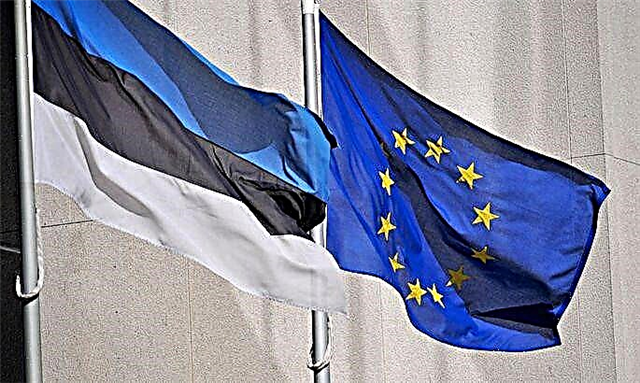Speaking about which drinks are popular in the Czech Republic, many immediately recall the famous Czech beer. However, not only this drink is loved by the inhabitants of the republic: the Czechs became the authors of no less famous wines, liqueurs, tinctures that have a pleasant taste, aroma, and often healing properties. Czech drinks are famous all over the world, so it's worth figuring out what Czechs drink and how.

The culture of drinking in the Czech Republic
According to international organizations, the level of alcohol consumption in the Czech Republic is quite high, but this is primarily due to beer. The popularity of this drink is evidenced by the fact that on Friday and Saturday not only in Prague, but also in other cities of the country, it is difficult to find free places in pubs.
Beer is advertised in sports and on television, and most Czechs do not consider it alcohol at all. It should be noted that the ancient beer culture prescribes to enjoy the taste of the drink itself and not eat food.
Czechs are more cautious about plum brandy (Czech moonshine), Becherovka, which is drunk for medicinal purposes, local rum and other strong drinks. It is not customary to celebrate holidays here at the table - people go with their families to nature, to the mountains, on excursions. In everyday life, booze is used in small quantities, without snacks, when chatting with friends.
Despite the seeming recklessness, Czechs do not drink alcohol so often, they know how to drink correctly, stop on time and do not reach a state of strong intoxication, which is considered indecent.
After drinking, they become not aggressive, but rather cheerful.
Czech alcoholic drinks
National alcoholic drinks in the Czech Republic are famous for their variety, many contain a set of herbs and spices, have an original smell and taste.
The most widespread Czech drink is undoubtedly beer, which is drunk every day, for any reason, enjoying its special aroma and taste.
Becherovka, which is called the fourteenth healing spring of Karlovy Vary, in addition to the 13 existing ones, has become the symbol of the Czech Republic.
Slivovitsa (plum vodka) and absinthe on wormwood also have their fans.
In addition, the white wines of Moravia are famous in Europe and all over the world.
So, when you come to the Czech Republic, you can always choose an alcoholic drink that suits you.
Features of Czech beer
Beer has become a part of the culture of the Czech people; it has been brewed here for over a thousand years. For a long time, only high-quality atec hops, water from deep artesian springs and the best varieties of barley have been used in brewing. Czechs brew light, dark, semi-dark beer with a strength of about 4.5%.

During the Middle Ages, bad beer was poured out in the central square of the city, and there was no greater disgrace for brewers than to be punished like that. Today, no one arranges such spectacles - however, bad beer is not brewed in the Czech Republic.
Becherovka - alcoholic symbol of the country
In the rating of the most famous alcoholic beverages in the Czech Republic, the Becherovka tincture occupies a leading position. Czechs love and are proud of their national product.
Composition and useful properties of the drink
The composition of the original "Becherovka" is a trade secret - it is an infusion of about 20 alcohol-based herbs. According to experts, it includes anise, cloves, cardamom, allspice, chamomile, lemon, honey, but in what proportions and what else is added to the composition, it is known only to the initiated. By the way, alcohol is made on the basis of Karlovy Vary water, thanks to which the product is of particular benefit.

The history of Becherovka goes back more than two centuries. At the beginning of the 19th century, the pharmacist Josef Becher compiled the so-called Carlsbad bitter, which helps with stomach diseases and nervous disorders. Since then, the family business has been flourishing, the drink is already being produced by his great-great-grandchildren, although the very name "Becherovka" appeared on the market only after the Second World War.
The classic bitter has a strength of 38 degrees, but there is Becherovka liqueur with a strength of 20 degrees and a strong liqueur reaching 40 degrees. The calorie content of the drink is 248 kcal per 100 g.
Taking only 20 mg of the drink before meals, adding it to tea, you can improve appetite, activate the stomach, and the secretion of gastric juice. With regular use of bitter, digestive disorders, flatulence, belching go away, and mood improves.
What types of "Becherovka" are on the market
In addition to the original bitter, which has been produced according to an unchanged recipe for more than two centuries, there are other types of drink in the Becherovka classification:
- Lemond liqueur with citrus aroma and low alcohol content - only 20%;
- Cordial with the addition of lime blossom, alcohol 35%;
- KV 14 - red wine was added to it and the strength was increased to 40%;
- Ice & Fire is a black balm that combines menthol and chili flavor. Fortress - 30%.
There is always an original bitter and citrus liqueur on free sale, and the design of the bottles and labels was chosen at the very beginning of the serial production and does not change for a long time, being always recognizable in the photos and store shelves. The rest of the Becherovka varieties can be bought only in company stores and at the factory.
How to use "Becherovka"
In Russia, this drink is often drunk instead of ordinary vodka or brandy, but this is wrong. Such use only leads to a health disorder.
Czechs drink "Becherovka" in the evening, after dinner - one small glass, chilled to 5 degrees. It is believed that there is no need to drink or eat it.
Many are interested in the question of how to drink the famous "Becherovka" for medicinal purposes. Usually 2 tablespoons are added per cup of coffee or tea. This improves the functioning of the whole organism, increases its tone. Often such a cocktail is taken for colds - it helps against coughs and sore throat.

Czechs also mix Becherovka with light beer or juice. The proportions depend on your preference, but it should be remembered that the combination of beer with a strong tincture can lead to rapid intoxication, so it is not recommended to take such a cocktail in large quantities.
What can be done with "Becherovka" at home
Many cocktails with "Becherovka" can be prepared by yourself:
- mix in a blender 150 ml of blackcurrant juice, 50 ml of mineral water, 40 ml of "Becherovka". Add ice and garnish with mint;
- add 30 ml of "Becherovka", 100 ml of apple liqueur to a glass with ice. You can add a few drops of ginger beer. Garnish with a slice of lime;
- mix 40 ml of "Becherovka" and 150 ml of cola. Garnish with a slice of lemon;
- pour into a tall glass 30 ml of "Becherovka", 30 ml of dessert white vermouth, add ice. Then pour 30 ml of champagne into this mixture, decorate the glass with raspberries, strawberries.
Try experimenting with the composition, adding the original taste of Becherovka to your favorite drinks.
Slivovitsa is the favorite drink of the Czechs
It is often said that plum brandy is rakia, brandy, local vodka, but in fact it is distilled plum juice, real moonshine with a strength of 45 to 70 degrees. At the same time, it is easy to drink, does not burn the throat, and fruity notes are felt in it.

The tradition of making this strong drink dates back to the Middle Ages. According to ancient documents, tax was levied on the distillation of plums already in the 15th century. In the middle of the 19th century, a plant for the production of this alcoholic drink was opened in the town of Vizovice.Its founder was Jakob Jelinek, and the drink itself is still often called jelinek plum brandy (Jelineka plum brandy), although it is produced today both in small enterprises and at home.
Such alcohol is very popular in the Balkan countries, Slovakia, however, the Moravian version is especially appreciated for its pleasant aroma and taste.
What types of plum brandy are there in the Czech Republic
There are several types of this popular drink on sale. The cheapest - after two stages of distillation with a strength of 50%. After the third stage of distillation, the degree rises to 70% - the Czechs call this drink a preheater.
The drink can be either completely transparent, similar to vodka, or it can have a golden cognac hue, which appears after aging in oak barrels. This version is closer to brandy, it tastes softer and has additional notes in the bouquet.
Regardless of the type, any plum brandy is easy to drink, and a hangover after it does not cause pain, since it is distilled fruit.
Similar drinks are also popular in the Czech Republic: pears from pears, apple from apples, as well as options from apricots, grapes, black currants, and other fruits and berries, which are fermented and then distilled into moonshine.
How do Czechs use plum brandy
Czechs are not prone to heavy drinking. Being drunk means losing the respect of friends, neighbors, acquaintances, so the amount you drink depends on how many degrees the drink contains. Usually strong plum brandy is drunk 1-2 glasses at lunch as an aperitif. As a rule, the first portion is not eaten, then fried cornmeal bread, potatoes, and meat can be served.

It is not mixed with other drinks and juices, since it loses its pleasant aftertaste. Serving temperature can be different: room temperature, chilled, and some plum brandy is even heated. It all depends on the tastes of those gathered at the table, since each temperature allows you to re-evaluate the quality of the drink, its aftertaste.
Homemade recipes
Often tourists are interested in the recipe for making plum brandy at home from moonshine.
- If you want to distill plums yourself, you only need to take sweet ripe plums and water. After removing the seeds, chop the fruits and leave them to ferment. First you need to make young plum wine, which is then distilled into moonshine.
- Add water to the fermented plums (for 11 kg plums - 8 liters of water). After 15-45 days, when the wine is ready, strain it thoroughly, separating the liquid from the pulp, and distill it.
- By adding another 20% of water, distill again.
- If you wish, you can insist the moonshine in an oak barrel throughout the year - the taste will turn out to be very interesting, but you can withstand the resulting drink right in the bottles and start tasting in a couple of days.
If the plums are sour, sometimes sugar is added to the wort. Here you cannot overdo it, so as not to get an ordinary moonshine. The amount of sugar should be about 150-200 g per 11 kg of plums.
Since plum brandy contains vegetable components that cause oxidation, the shelf life of this drink at home is about a year, while in industrial conditions plum brandy in barrels can be infused and stored for up to 5 years or more.
Liqueur "Fernet Stock" - the pride of the Czech Republic
The bitter liqueur Fernet has been known in the Czech Republic for over 100 years - since the time when the enterprising merchant and winemaker Stock created his famous drink of bright red color with a strength of 40%.

The combination of 14 herbs that are used in the production is still kept secret. Raw materials are brought from Africa, Indonesia, Pakistan and other countries, and high-quality Pilsen water, together with exotic herbs and good alcohol, brought the drink worldwide fame.
Liqueur is surprisingly easy to drink, has a unique taste and aroma. Every day around the world drink about a million glasses of liqueur, it is included in the top 100 best-selling drinks in the world. "Fernet" has long been the most desirable gift that can be brought from the Czech Republic.

The liqueur is produced in the Pilsen suburb of Bozhkov, in the same place as the famous Bozhkov rum. Here they make the traditional "Fernet Stock", as well as "Citrus" and "Orange", which have a taste of lemon and orange.
Czechs drink liquor in small glasses just like that, enjoying its unique smell.
In other countries, cocktails have become widespread with the addition of tonic, sprite, apple juice to a small amount of aromatic liqueur.
Fruit miracle - liqueur "Griotka"
Cherry liqueur “Griotka” is created using high quality fruit juices. The basis is noble sorts of cherries, to the juice of which blueberries, apricots, and plums are added. The drink turns out to be surprisingly soft and pleasant to the taste, smells like fruit in summer, and since its strength is only 18%, “Griotka” liqueur has become a favorite lady's drink.

In addition to the famous “Griotka”, the company “Rudolf Jelinek” produces another fruit miracle - “Plum” - a liqueur made from ripe plums with the addition of high-quality alcohol and plum distillate. The aroma of plum pits and the sweetness of the plum create a noble drink that is in demand among Czechs and guests of the country.
Czech wines

There are many vineyards in the south of the Czech Republic, so there are quite a few local wines. It should be noted that dessert wines are not used here - they drink only dry or semi-dry ones.
- Among the most famous brands are red dry “Merlot”, aged in oak barrels, and white dry “Gruner Veltliner”, which is often drunk as an aperitif.
- Lovers of sweets choose "Ice Wine" - it is made from grapes frozen on the vine. The sweet frozen wort is fermented into an amazingly tasty drink.
- For those who like champagne, Louis Girardot brut sparkling wine is suitable. It goes through a secondary fermentation period right in the bottle and gets a subtle aftertaste of honey and cheese.
- Straw wine is also popular in the Czech Republic - Slámové víno. It is made from grapes that have lain on straw for a year. The resulting raisins lose a lot of moisture, but their sugar content increases, and the drink from it develops an exquisite taste.
Wines in the Czech Republic are relatively inexpensive, while the norm for wine consumption in a decent company is a glass, no more.
Many Czech wines have such a strong taste that they are diluted with mineral water at the table.
Popularity of other drinks
In addition to beer, wine, spirits and liqueurs, Czechs consume many other drinks. In particular, absinthe is popular - a tincture of wormwood with a strength of 70 degrees. Even in small quantities, wormwood essential oils cause hallucinations, which is why this drink is banned in many states. Classic absinthe is bright green, but available in golden, brown and reddish colors.

Mulled wine is an excellent winter drink that warms up in cold weather. In winter, it is sold right on the street. Czechs drink a variety of cocktails, mixing their famous liqueurs and herbal liqueurs with wines, beer and mineral water.
Medovina is one of the oldest drinks in the Czech Republic. This is a light liqueur of 14-18 degrees, created on the basis of honey, herbs, yeast, which is aged in wooden barrels for up to 5 years. It is consumed slightly warmed up, they drink it from small glasses - no more than 20 ml. In the Czech Republic, it is believed that mead heals colds, has a preventive effect on the heart and blood vessels, and it has no contraindications.
Finally
Anyone who comes to the Czech Republic is amazed at the abundance of alcoholic drinks in this country. In terms of their consumption, the Czech Republic is among the top ten countries in the world.
At the same time, you will hardly see drunk people on the streets. High culture of consumption, the ability to stop on time, the desire to enjoy an unusual taste, smell, bouquet of drinks, and not get drunk - these are the features of the Czech feast.Every year hundreds of thousands of tourists come here to get acquainted with original drinks and learn their taste, and almost each of them takes a couple of bottles of alcohol produced in the Czech Republic as a souvenir of the trip.











